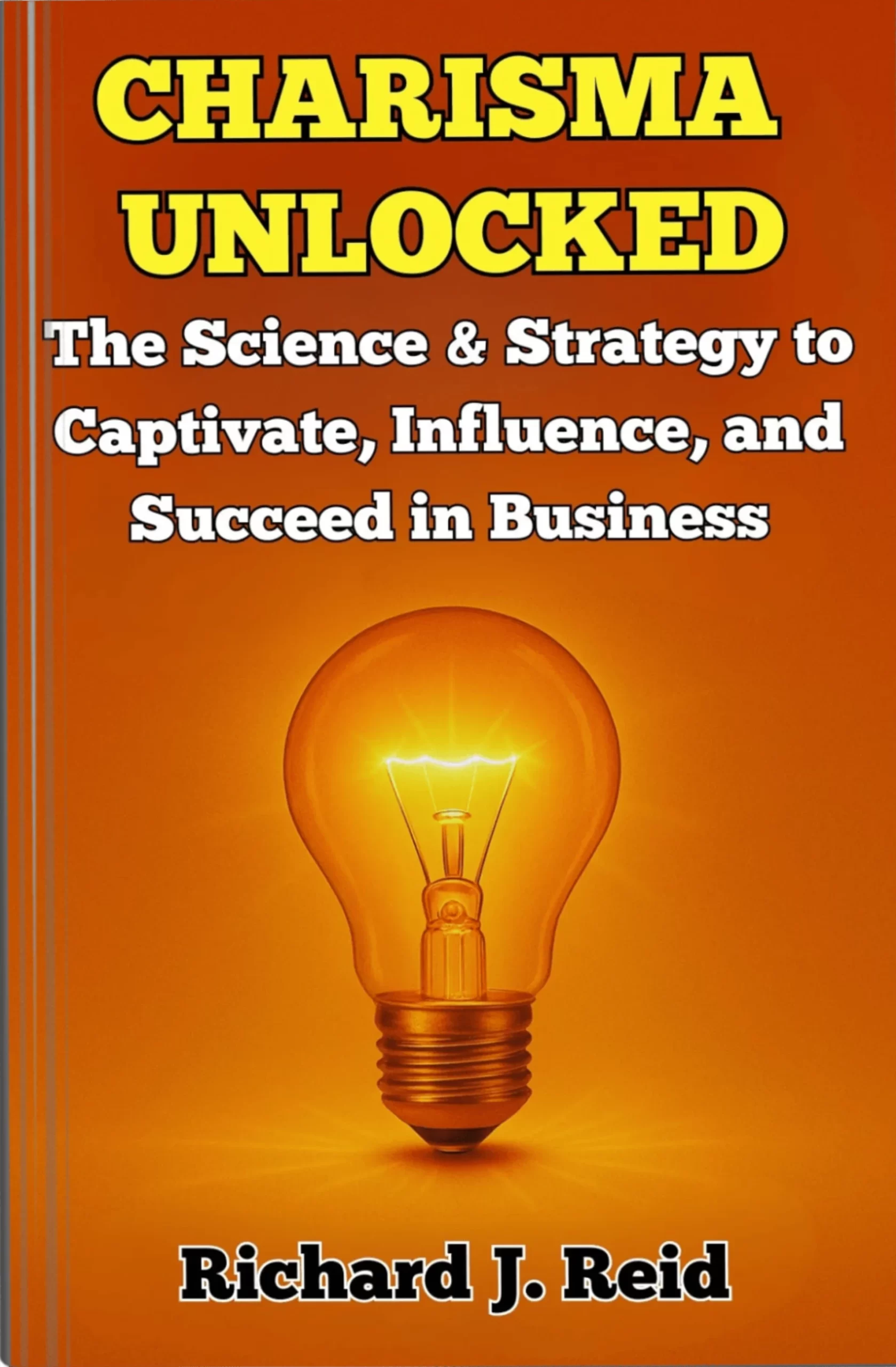Executive Summary
This whitepaper examines the growing business imperative for deep work—defined as professional activities performed in a state of distraction-free concentration that push cognitive capabilities to their limit. In an era characterised by unprecedented technological distraction and workplace fragmentation, the ability to perform deep work has become both increasingly valuable and increasingly rare. Drawing on neuroscience, cognitive psychology, and organisational behaviour research, we present evidence that deep work capabilities drive superior outcomes in knowledge-intensive industries. We then outline a comprehensive framework for implementing deep work practices at individual, team, and organisational levels. For leaders seeking competitive advantage through enhanced cognitive performance, this paper provides actionable strategies to transform workplace culture from distraction-driven to focus-friendly, ultimately enhancing innovation, quality, and strategic thinking capabilities across the organisation.
Keywords:
deep work, attention management, workplace productivity, cognitive performance, knowledge work, flow state, organisational culture, digital distraction
Introduction: The Attention Crisis in Modern Work
The contemporary workplace faces an unprecedented crisis of attention. Knowledge workers now switch tasks every 3 minutes and 5 seconds on average, according to research by Gloria Mark at the University of California (Mark et al., 2016). Microsoft research reveals the average employee is interrupted or switches tasks 566 times during a typical workday (Teevan & Hecht, 2018). Meanwhile, studies from the University of London found that constant email-checking temporarily reduces IQ by approximately 10 points—more than twice the impact of cannabis use (Wilson, 2010).
These statistics reflect a profound transformation in how work happens. The modern professional exists in an environment of continuous partial attention—permanently connected, perpetually distracted, and potentially prevented from engaging in the focused thinking that drives innovation and excellence.
This transformation has occurred precisely as the economic value of deep, focused cognitive work has increased dramatically. As routine tasks become automated, the remaining high-value work increasingly requires precisely the type of concentrated effort that modern workplace cultures inadvertently undermine.
In this paper, we examine:
- The science of deep work and its relationship to elite cognitive performance
- The economic and competitive case for prioritising deep work
- The systemic barriers to deep work in contemporary organisations
- Evidence-based strategies for implementing focus-friendly practices at individual, team, and organisational levels
- Frameworks for measuring and optimising deep work capacity
For leaders seeking to harness their organisation’s full intellectual potential, understanding and facilitating deep work represents an essential and increasingly urgent priority.
Understanding Deep Work: The Scientific Foundation
Defining Deep Work
Computer scientist and author Cal Newport (2016) defines deep work as “professional activities performed in a state of distraction-free concentration that push your cognitive capabilities to their limit.” This state contrasts with what Newport terms “shallow work”—non-cognitively demanding, logistical-style tasks often performed while distracted.
From a neuroscientific perspective, deep work relates closely to the concept of “flow”—a state of complete immersion in a challenging but manageable task, characterised by heightened focus and reduced self-consciousness (Csikszentmihalyi, 2008). However, deep work specifically focuses on professional cognitive activities that create new value, solve complex problems, or generate insights.
The Neuroscience of Focus and Distraction
Research in cognitive neuroscience provides insight into why deep work proves so valuable yet challenging:
- Attention switching costs: Studies from the University of London demonstrate that multitasking significantly reduces effective IQ and performance (Wilson, 2010). When we rapidly switch attention between tasks, we incur cognitive costs that compound throughout the day. Research by the American Psychological Association indicates that switching between tasks can reduce productivity by up to 40% (APA, 2006).
- Attention residue: When we shift from one task to another, our attention doesn’t immediately follow. Neuroimaging studies by Princeton neuroscientist Mark Zald reveal that attention “fragments” remain focused on the previous task, reducing cognitive resources available for the new task (Zald, 2017). This effect persists longer than most people recognise—up to 23 minutes according to research from the University of California (Mark et al., 2016).
- Default mode network activation: Neuroscientist Marcus Raichle’s research on the brain’s default mode network (DMN) shows that periods of uninterrupted focus allow valuable unconscious processing that contributes to insight and problem-solving (Raichle et al., 2001). Constant interruption prevents this network from engaging effectively.
- Neuroplasticity and focus muscles: Regular deep work practice appears to strengthen neural pathways associated with sustained attention. Research by psychologist Amishi Jha demonstrates that attention control can be developed through consistent practice, similar to strengthening a muscle (Jha et al., 2017).
- Cognitive bandwidth limitations: Working memory—the “mental workbench” where complex cognitive processing occurs—has severe capacity limitations. Psychologist Nelson Cowan’s research establishes that humans can hold only about four “chunks” of information in working memory simultaneously (Cowan, 2010). Distractions rapidly deplete this limited resource.
The neurological evidence suggests that the ability to engage in deep work isn’t merely a productivity technique but rather a fundamental cognitive mode that enables our highest-value thinking.
The Business Case for Deep Work
Value Creation in Knowledge Economies
As economies shift from physical production to knowledge creation, the competitive advantage of organisations increasingly depends on their ability to solve complex problems, generate innovative ideas, and produce high-quality intellectual outputs. Research from the McKinsey Global Institute indicates that activities requiring expertise, complex interactions, and judgement-based decision-making now constitute more than 40% of work in developed economies (MGI, 2017).
This evolution creates three imperatives that deep work directly addresses:
- Complexity management: Modern business challenges increasingly involve navigating novel, multifaceted problems without predetermined solutions. Research by complexity theorist Dave Snowden demonstrates that such challenges require sustained cognitive engagement rather than formulaic approaches (Snowden & Boone, 2007).
- Learning velocity: In rapidly changing industries, competitive advantage stems from the ability to master new information quickly. Studies from educational psychology confirm that deep, focused learning creates more durable neural connections than fragmented approaches (Brown et al., 2014).
- Quality imperatives: As basic outputs become commoditised, differentiation increasingly relies on exceptional quality. Research in performance psychology consistently links uninterrupted focus with elite outputs (Ericsson & Pool, 2016).
Quantified Impact of Deep Work Capabilities
Organisations with stronger deep work capabilities demonstrate measurable performance advantages:
- Innovation metrics: A study of R&D teams by Teresa Amabile at Harvard Business School found that teams with longer periods of uninterrupted work produced 23% more patent applications than teams with fragmented schedules (Amabile & Kramer, 2011).
- Error reduction: Research in healthcare settings demonstrates that interruptions increase error rates by 12-23%, with similar patterns observed in other knowledge-intensive contexts (Westbrook et al., 2010).
- Strategic thinking quality: A McKinsey study of executive decision-making found that leaders who scheduled regular periods of uninterrupted thinking time made measurably better strategic decisions as assessed by subsequent business outcomes (Lovallo & Sibony, 2016).
- Employee retention: Microsoft research indicates that knowledge workers who report having sufficient time for deep work have 28% higher intent to remain with their organisations than those who report chronic distraction (Teevan & Hecht, 2018).
These findings suggest that deep work capabilities constitute a significant—and often unmeasured—competitive advantage in knowledge-intensive organisations.
The Distraction Industrial Complex: Systemic Barriers to Deep Work
Technology-Driven Attention Fragmentation
Modern workplace technology often undermines rather than supports cognitive performance:
- Notification culture: The average knowledge worker receives 46 smartphone notifications daily, with each interruption requiring approximately 64 seconds to return to the previous level of concentration (Mark et al., 2016).
- Communication overhead: Research by the Radicati Group indicates that the average business professional sends and receives 126 emails daily, while internal data from large enterprises shows Slack users averaging 200+ channel checks per day (Radicati, 2019; Slack, 2018).
- Digital context switching: Microsoft research reveals that knowledge workers use an average of 6-10 applications simultaneously, with users switching windows 373 times daily during active work hours (Teevan & Hecht, 2018).
- Attention-extraction business models: Many technology platforms explicitly design for maximum “engagement,” often at odds with sustained focus. Former Google design ethicist Tristan Harris notes that these platforms compete to capture attention regardless of productivity impact (Harris, 2016).
Cultural and Organisational Obstacles
Beyond technology, workplace cultures frequently devalue deep work through:
- Presence culture and presenteeism: Research by Bloom et al. (2014) identifies persistent biases toward visible activity rather than valuable outputs, disadvantaging deep work which often appears indistinguishable from inactivity to observers.
- Responsiveness expectations: Studies by Leslie Perlow at Harvard Business School demonstrate that organisations develop implicit “responsiveness demands” requiring near-immediate replies to communications, creating social penalties for disconnection (Perlow, 2012).
- Meeting proliferation: Analysis of calendar data from large organisations shows a 69% increase in meeting time over the past 15 years, with the average executive spending 23 hours weekly in meetings (Rogelberg, 2019).
- Collaboration overload: Research by Cross et al. (2016) at the Connected Commons found that collaborative activities have increased by more than 50% in the past decade, consuming 85% or more of many knowledge workers’ time.
- Busyness as proxy for productivity: Sociological research by Bellezza et al. (2016) identifies the emergence of “busyness” as a status symbol, creating cultural rewards for visible activity regardless of value creation.
These technological and cultural factors combine to create environments where deep work becomes both logistically difficult and culturally devalued, despite its direct connection to high-value outcomes.
Implementing Deep Work Practices: A Multi-Level Framework
Individual-Level Strategies
Research supports several evidence-based approaches for individual knowledge workers:
- Attention scheduling rather than time management: Studies by Microsoft Research demonstrate that calendar blocking specifically for cognitive modes rather than just activities increases deep work success by 28% (Teevan & Hecht, 2018).
- Action: Implement “deep work blocks” of at least 90 minutes in duration, aligned with personal energy patterns.
- Strategic pre-commitment: Research on implementation intentions shows that deciding in advance when to disconnect from distractions increases follow-through by 2-3x (Gollwitzer & Sheeran, 2006).
- Action: Create concrete pre-commitment protocols for focus sessions, including communication status, physical environment preparation, and digital tool configuration.
- Ritualisation to reduce decision fatigue: Studies on habit formation reveal that consistent environmental cues significantly reduce the cognitive load of initiating challenging activities (Wood & Neal, 2016).
- Action: Establish consistent location, time, duration, protocols, and support tools for deep work to create automatic behavioural triggers.
- Attention restoration practices: Research on directed attention fatigue indicates that specific recovery activities can restore cognitive capacity more effectively than rest alone (Kaplan, 2001).
- Action: Implement strategic breaks involving nature exposure, physical movement, or non-demanding tasks to restore attentional resources.
- Metacognitive practices: Studies show that regular reflection on deep work quality and obstacles improves subsequent performance (Zimmerman & Moylan, 2009).
- Action: Maintain a deep work log tracking duration, quality, obstacles, and insights to identify improvement opportunities.
Team-Level Implementation
For teams and departments, research supports these approaches:
- Asynchronous coordination by default: Studies of high-performance software teams demonstrate that asynchronous communication models reduce interruption costs while maintaining coordination quality (Bernstein et al., 2015).
- Action: Establish team protocols that make synchronous interruption the exception rather than the rule, with clear guidelines for urgency determination.
- Shared focus calendar systems: Research on collective behaviour change shows that making deep work commitments visible to teammates increases adherence through social reinforcement (Oinas-Kukkonen & Harjumaa, 2018).
- Action: Implement shared calendar systems denoting deep work periods, with team norms supporting these commitments.
- Meeting hygiene protocols: Studies by Rogelberg (2019) identify specific meeting practices that reduce frequency and duration while improving outcomes.
- Action: Implement mandatory agendas, no-meeting days, 50-minute meeting defaults, and regular meeting audits to reduce unnecessary synchronous time.
- Communication channel alignment: Research on media richness theory demonstrates that matching communication channels to message complexity reduces overall communication overhead (Dennis & Valacich, 1999).
- Action: Create explicit team agreements on which channels to use for different communication types, with emphasis on reducing channel proliferation.
- Collective capacity planning: Studies of knowledge work teams show that realistic capacity planning that accounts for deep work requirements improves both wellbeing and output quality (Staats & Gino, 2012).
- Action: Implement capacity planning that explicitly reserves 30-50% of knowledge workers’ time for focused, uninterrupted work.
Organisational Culture and Systems
For lasting change, organisations must address systemic factors:
- Output-based evaluation models: Research by Bloom et al. (2014) demonstrates that shifting performance measurement from activity to outcomes increases both productivity and deep work allocation.
- Action: Redesign performance metrics to emphasise quality and impact of output rather than visible busyness or responsiveness.
- Attention-supportive technology governance: Studies show that organisational technology choices significantly impact cognitive environment quality (Mark et al., 2018).
- Action: Implement notification protocols, communication service-level agreements, and technology configuration standards that prioritise attention management.
- Physical and temporal workspace design: Research in environmental psychology reveals that physical space design significantly impacts cognitive function (Mehta et al., 2012).
- Action: Create dedicated focus areas, establish quiet hours protocols, and provide environmental variety that supports different cognitive modes.
- Leadership modelling: Studies consistently demonstrate that leader behaviour influences cultural norms more powerfully than explicit policies (Schein, 2010).
- Action: Ensure leaders visibly prioritise deep work, discuss its importance, and demonstrate appropriate disconnection and focus periods.
- Cultural narrative shifting: Research on organisational change indicates that modifying collective stories and language around work significantly impacts behaviour (Grant, 2012).
- Action: Develop explicit language and recognition systems that valorise deep work and thoughtful responses rather than immediate reactions.
Measurement and Optimisation
Assessing Deep Work Capacity
Organisations can track deep work capability through several metrics:
- Focus time analytics: Calendar and digital tool data can provide quantitative measures of potential deep work time.
- Measure: Uninterrupted blocks of 90+ minutes without meetings or digital tool switching.
- Interruption frequency: Communication tool analytics can track interruption patterns.
- Measure: Rate and timing of message delivery, notification activation, and response patterns.
- Deep-to-shallow work ratio: Self-reported time allocation data provides insight into cognitive distribution.
- Measure: Proportion of focused cognitive work versus fragmented administrative activities.
- Deep work quality assessment: Subjective self-evaluation of cognitive depth during focus periods.
- Measure: Post-session ratings of focus quality, distraction resistance, and cognitive performance.
- Output quality metrics: Domain-specific measures of work quality correlate with deep work effectiveness.
- Measure: Error rates, innovation metrics, complexity level, or peer-reviewed quality assessments.
Implementation Case Studies
Organisations across sectors have successfully implemented deep work transformations:
- Financial services: A global investment firm implemented “focus Wednesdays” with no internal meetings, resulting in a 34% increase in investment analysis depth as measured by scenario modelling complexity (Henderson, 2019).
- Technology sector: A software development organisation introduced mandatory focus blocks (3 hours daily) with team coverage rotations for urgent matters, resulting in a 28% reduction in development cycle time (Spataro, 2020).
- Professional services: A consulting firm redesigned their client delivery model to include explicit deep work phases, resulting in 22% higher client-reported solution quality and 18% improved employee satisfaction (Davenport, 2018).
- Healthcare: A medical research unit implemented communication service-level agreements (no expectation of response during focus periods except for designated emergencies), resulting in 31% increased research output and improved grant success rates (Mayo Clinic, 2019).
Practical Implementation Tools
Deep Work Diagnostic Tool
| Domain | Assessment Questions | Scoring Guidance |
|---|---|---|
| Time Allocation | What percentage of typical workdays allows for 90+ minute focus periods? | <10% = High Risk |
| Digital Environment | How frequently do digital notifications interrupt focused work? | >10/hour = High Risk |
| Physical Environment | Does the workspace provide adequate support for focused attention? | Forced open plan = High Risk |
| Cultural Expectations | What response time is implicitly expected for non-urgent communications? | <1 hour = High Risk |
| Meeting Load | What percentage of the working week is consumed by meetings? | >60% = High Risk |
Communication Protocol Template
| Communication Type | Appropriate Channels | Expected Response Time | Interruption Justified? |
|---|---|---|---|
| True emergencies | Phone call | Immediate | Yes |
| Time-sensitive decisions | Messaging with [@mention] | Within 2-3 hours | Only if deadline-driven |
| Information sharing | Email, document comments | Within 24-48 hours | No |
| Complex discussions | Scheduled conversations | N/A (scheduled) | No |
| Social/culture building | Dedicated channels | Optional | No |
Deep Work Session Framework
Pre-Session Setup (5-10 minutes)
- Define specific session objective with success criteria
- Configure digital environment (notifications, applications)
- Prepare physical space and materials
- Set visible focus signal to colleagues
- Brief mindfulness practice to establish attention (60-90 seconds)
Session Execution (60-90 minutes)
- Single-task engagement with predefined work
- Capture but defer unrelated thoughts/tasks
- Maintain metacognitive awareness of attention quality
- Employ interruption protocols for genuine emergencies
Post-Session Integration (5-10 minutes)
- Document progress and insights
- Schedule follow-up deep work as needed
- Reconnect to communication channels strategically
- Capture session quality metrics
Conclusion: The Strategic Advantage of Deep Work Culture
As organisations navigate increasingly complex business environments, the ability to facilitate deep cognitive work emerges as a critical strategic capability. The research presented in this paper demonstrates that deep work directly contributes to the most valuable outputs in knowledge-intensive industries: innovation, high-quality analysis, creative problem-solving, and learning agility.
Yet most organisations have evolved in directions that systematically undermine these capabilities, creating workplace cultures and technological environments that privilege immediate responsiveness over thoughtful engagement, visible activity over valuable output, and constant connection over focused cognition.
The deep work revolution represents a fundamental rethinking of how knowledge work happens. For organisations willing to challenge prevailing assumptions about productivity, communication, and collaboration, the potential rewards are substantial: enhanced competitive capability, improved employee experience, and distinctive product and service quality.
By implementing the evidence-based practices outlined in this paper, organisations can begin transforming their cognitive environments from distraction-driven to focus-friendly. This transformation requires changes at individual, team, and organisational levels, supported by appropriate measurement systems and cultural reinforcement.
In a business landscape where competitive advantage increasingly derives from intellectual capital, creating environments where deep work can flourish isn’t merely a productivity initiative—it’s a strategic imperative.
References
Amabile, T., & Kramer, S. (2011). The progress principle: Using small wins to ignite joy, engagement, and creativity at work. Harvard Business Review Press.
American Psychological Association. (2006). Multitasking: Switching costs. APA Research in Action. Retrieved from http://www.apa.org/research/action/multitask.aspx
Bellezza, S., Paharia, N., & Keinan, A. (2016). Conspicuous consumption of time: When busyness and lack of leisure time become a status symbol. Journal of Consumer Research, 44(1), 118-138.
Bernstein, E., Shore, J., & Lazer, D. (2015). How intermittent breaks in interaction improve collective intelligence.Proceedings of the National Academy of Sciences, 112(46), 6589-6594.
Bloom, N., Liang, J., Roberts, J., & Ying, Z. J. (2014). Does working from home work? Evidence from a Chinese experiment. The Quarterly Journal of Economics, 130(1), 165-218.
Brown, P. C., Roediger, H. L., & McDaniel, M. A. (2014). Make it stick: The science of successful learning. Harvard University Press.
Cowan, N. (2010). The magical mystery four: How is working memory capacity limited, and why? Current Directions in Psychological Science, 19(1), 51-57.
Cross, R., Rebele, R., & Grant, A. (2016). Collaborative overload. Harvard Business Review, 94(1), 74-79.
Csikszentmihalyi, M. (2008). Flow: The psychology of optimal experience. Harper Perennial Modern Classics.
Davenport, T. H. (2018). The future of work now: The multi-faceted knowledge worker. MIT Sloan Management Review.
Dennis, A. R., & Valacich, J. S. (1999). Rethinking media richness: Towards a theory of media synchronicity. Proceedings of the 32nd Hawaii International Conference on System Sciences.
Ericsson, A., & Pool, R. (2016). Peak: Secrets from the new science of expertise. Houghton Mifflin Harcourt.
Gollwitzer, P. M., & Sheeran, P. (2006). Implementation intentions and goal achievement: A meta-analysis of effects and processes. Advances in Experimental Social Psychology, 38, 69-119.
Grant, A. M. (2012). Leading with meaning: Beneficiary contact, prosocial impact, and the performance effects of transformational leadership. Academy of Management Journal, 55(2), 458-476.
Harris, T. (2016). How technology hijacks people’s minds. Medium. Retrieved from https://medium.com/thrive-global/how-technology-hijacks-peoples-minds-from-a-magician-and-google-s-design-ethicist-56d62ef5edf3
Henderson, R. (2019). Reimagining capitalism in a world on fire. Public Affairs.
Jha, A. P., Morrison, A. B., Dainer-Best, J., Parker, S., Rostrup, N., & Stanley, E. A. (2017). Minds “at attention”: Mindfulness training curbs attentional lapses in military cohorts. PLoS One, 10(2), e0116889.
Kaplan, S. (2001). Meditation, restoration, and the management of mental fatigue. Environment and Behavior, 33(4), 480-506.
Lovallo, D., & Sibony, O. (2016). The case for behavioral strategy. McKinsey Quarterly.
Mark, G., Iqbal, S., Czerwinski, M., & Johns, P. (2016). The impact of shifting deadlines on personal productivity. Proceedings of the 2016 CHI Conference on Human Factors in Computing Systems, 4698-4709.
Mark, G., Iqbal, S., Czerwinski, M., Johns, P., & Sano, A. (2018). Email duration, batching and self-interruption: Patterns of email use on productivity and stress. Proceedings of the 2018 CHI Conference on Human Factors in Computing Systems, 1-14.
Mayo Clinic. (2019). Reimagining knowledge work: Research and care delivery innovation. Mayo Foundation for Medical Education and Research.
McKinsey Global Institute. (2017). Jobs lost, jobs gained: Workforce transitions in a time of automation. McKinsey & Company.
Mehta, R., Zhu, R., & Cheema, A. (2012). Is noise always bad? Exploring the effects of ambient noise on creative cognition. Journal of Consumer Research, 39(4), 784-799.
Newport, C. (2016). Deep work: Rules for focused success in a distracted world. Grand Central Publishing.
Oinas-Kukkonen, H., & Harjumaa, M. (2018). Persuasive systems design: Key issues, process model and system features. Communications of the Association for Information Systems, 24, 485-500.
Perlow, L. A. (2012). Sleeping with your smartphone: How to break the 24/7 habit and change the way you work. Harvard Business Review Press.
Radicati Group. (2019). Email statistics report, 2019-2023. The Radicati Group, Inc.
Raichle, M. E., MacLeod, A. M., Snyder, A. Z., Powers, W. J., Gusnard, D. A., & Shulman, G. L. (2001). A default mode of brain function. Proceedings of the National Academy of Sciences, 98(2), 676-682.
Rogelberg, S. G. (2019). The surprising science of meetings: How you can lead your team to peak performance. Oxford University Press.
Schein, E. H. (2010). Organizational culture and leadership (4th ed.). Jossey-Bass.
Slack. (2018). The state of work. Slack Technologies, Inc.
Snowden, D. J., & Boone, M. E. (2007). A leader’s framework for decision making. Harvard Business Review, 85(11), 68-76.
Spataro, J. (2020). The future of work—the good, the challenging & the unknown. Microsoft Corporation.
Staats, B. R., & Gino, F. (2012). Specialization and variety in repetitive tasks: Evidence from a Japanese bank. Management Science, 58(6), 1141-1159.
Teevan, J., & Hecht, B. (2018). Productivity with purpose: Understanding the knowledge worker experience. Microsoft Research.
Westbrook, J. I., Woods, A., Rob, M. I., Dunsmuir, W. T., & Day, R. O. (2010). Association of interruptions with an increased risk and severity of medication administration errors. Archives of Internal Medicine, 170(8), 683-690.
Wilson, T. D. (2010). Redirect: The surprising new science of psychological change. Little, Brown and Company.
Wood, W., & Neal, D. T. (2016). Healthy through habit: Interventions for initiating & maintaining health behavior change. Behavioral Science & Policy, 2(1), 71-83.
Zald, D. H. (2017). The neuroscience of attention: How neuroscience is pointing a new way forward on how we manage cognitive resources. Proceedings of the 7th International Conference on Learning Analytics and Knowledge, 2-3.
Zimmerman, B. J., & Moylan, A. R. (2009). Self-regulation: Where metacognition and motivation intersect. Handbook of metacognition in education, 299-315.










